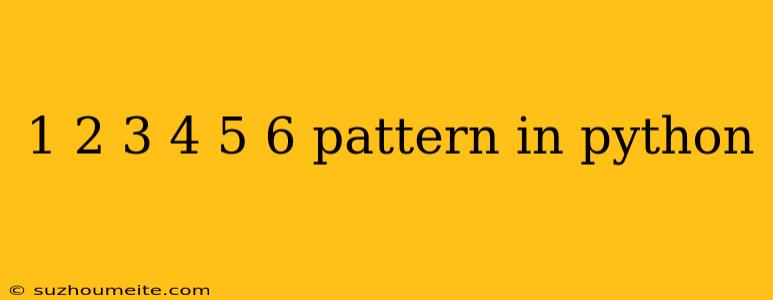1 2 3 4 5 6 Pattern in Python
The 1 2 3 4 5 6 pattern is a popular problem in programming, where you need to print a sequence of numbers in a specific pattern. In this article, we will explore how to implement the 1 2 3 4 5 6 pattern in Python.
What is the 1 2 3 4 5 6 Pattern?
The 1 2 3 4 5 6 pattern is a sequence of numbers that increases by 1, then 2, then 3, and so on. The pattern looks like this:
1
2 3
4 5 6
7 8 9 10
11 12 13 14 15
As you can see, each row has one more number than the previous row, and the numbers increase sequentially.
Implementation in Python
To implement the 1 2 3 4 5 6 pattern in Python, we can use a simple loop to generate the sequence. Here's an example code:
n = 5 # number of rows
num = 1
for i in range(n):
for j in range(i + 1):
print(num, end=' ')
num += 1
print()
Let's break down the code:
- We define the number of rows
nand the starting numbernum. - We use a nested loop to generate the sequence. The outer loop
iruns from 0 ton-1, and the inner loopjruns from 0 toi. - Inside the inner loop, we print the current number
numfollowed by a space, and then incrementnumby 1. - After each inner loop iteration, we print a newline character to move to the next row.
Output
Running the code above will produce the following output:
1
2 3
4 5 6
7 8 9 10
11 12 13 14 15
Which is the desired 1 2 3 4 5 6 pattern!
Conclusion
The 1 2 3 4 5 6 pattern is a fun and challenging problem in programming. With Python's simplicity and flexibility, we can easily implement this pattern using a nested loop. By understanding the logic behind the pattern, you can apply this concept to other programming problems and create more complex sequences.
